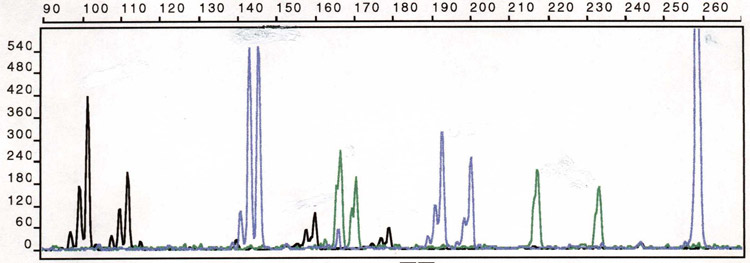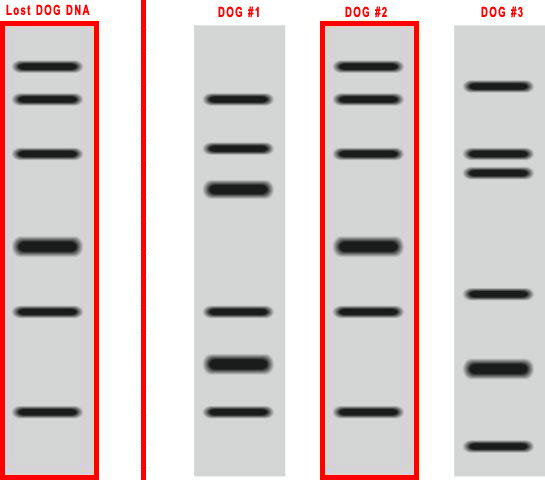|
How DOGdex ID Works by using DNA to Identify Lost Dogs The main reason we can use DNA to identify lost dogs is because each dog is unique and the DNA that makes up that dog is also unique, so no 2 DNA samples will ever be exactly the same unless they are from the exact same dog. This is the most accurate way of identifying dogs or even humans because of the details contained in our DNA. Since DNA is so small we can't just look at it under a microscope and tell who it came from, but we can do testing that will give us data or properties of the DNA that is unique to each dog and compare the results with existing samples. This process is known as DNA Fingerprinting. Just like you can match humans from their finger prints, you can also match humans from a DNA fingerprint.  Fingerprints are easy to collect, but very difficult to match because the same finger will often give a different looking fingerprint impression. Only certain key points are used as markers to match each fingerprint. This is a very subjective process and often one that will provide inconclusive results. People have tried a similar process with dogs using their nose prints, but the same problems make it less than useful in identifying dogs from a large database. DNA however is much more conclusive and can yield exact matchs. We start with a simple swab of saliva from each dog and use the DNA contained in that saliva to create a digital fingerprint. DNA can be extracted from any tissue, blood, saliva or even a single hair. No matter what the DNA source is, it will always be the same as long as it came from the same dog. You can think of it like the biological version of a serial number.
The old electrophoresis process is now replaced by computer driven DNA analyzers that can achieve the same results in seconds and deliver a digital print outs of the information. The newer version of the DNA fingerprint is know as an electropherogram and looks much different than the DNA fingerprint shown above using agarose gel. However, the principle is exactly the same.  The electropherogram displayed shows 6 markers just like the older style gel process but we have more information and more detail and more accuracy than we did previously. This allows even more accurate matching and less room for error. Using advanced computer software the electropherogram can be compared with those from millions of other dogs and exact matches can be made. Even if the dogs appearance has been changed, hair has been dyed, got fatter, thinner etc, to the point that the owner does not recognize them, the DNA will still be the same. The process of analyzing the DNA is quite complex, but the principle is basically the same as matching human finger prints. We take a sample, create a print and then compare it with all possible matches. As long as a sample has been submitted previously from your dog, when any dog is found it will be matched against every dogs digital fingerprint and if yours matches, you get your dog back. This is also a powerful tool in eliminating dog theft, because when someone registers a new dog it is also checked against all the missing dog profiles and if a match is found the original owner gets their dog back. DOGdex ID is the ultimate tool in finding lost dogs, one who's time has come. The science is here, the technology to make the matches is here, why not use it to solve something millions of dog owners face every year, finding their lost dog. We have done the research, created the product, built the software and the service is up an running. To make it possible to return 100% of the lost dogs every year all we need is your cooperation and willingness to participate. |


